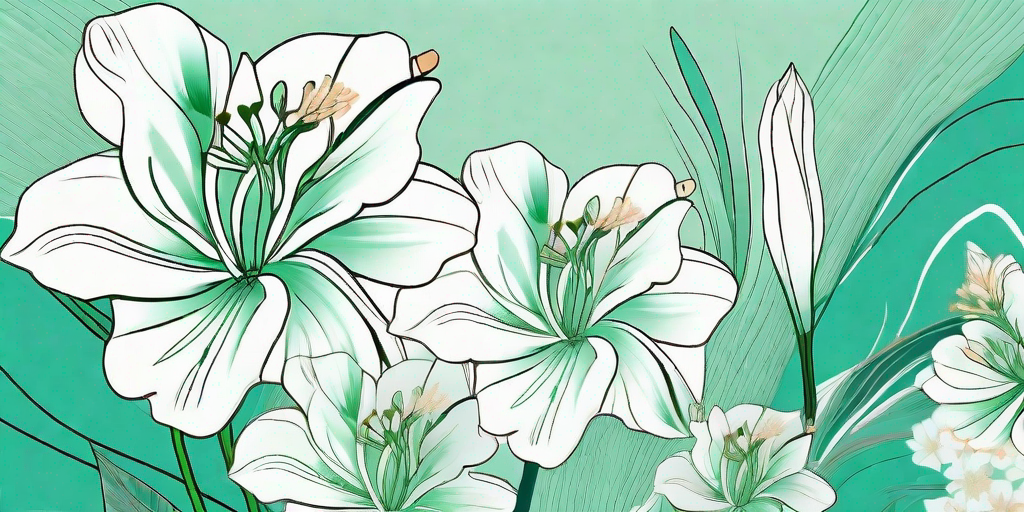
Welcome, dear reader, to a fragrant journey that will take us through the verdant valleys of botany, into the heart of a flower that has captivated senses and hearts alike - the Polianthes Tuberosa. This isn't just any ordinary flower, oh no! This is a floral diva that demands attention and gets it too, with its intoxicating aroma and stunning beauty. So, buckle up, because we're about to embark on a botanical adventure of epic proportions.
The Enchanting Origins of Polianthes Tuberosa
Our journey begins in the tropical regions of Mexico, where the Polianthes Tuberosa, or the Tuberose as it is commonly known, first spread its petals to the world. This perennial plant, a member of the Agavaceae family, has been a symbol of love and sensuality in various cultures, and it's not hard to see why. With its elegant white flowers and intoxicating scent, it's like the Marilyn Monroe of the floral world.
From Mexico, the Tuberose travelled across the world, charming its way into gardens and hearts alike. It was particularly loved by the Victorians, who were so enamoured by its scent that they included it in their floral language as a symbol of dangerous pleasure. Cheeky, isn't it?
The Tuberose in Culture and Mythology
The Tuberose has not just been a garden favourite, but has also found its way into cultural narratives and mythologies. In India, for instance, it is known as 'Rajnigandha', which translates to 'night-fragrant'. It is often used in religious ceremonies and weddings, symbolising love and desire.
In Hawaiian culture, the Tuberose is used to make leis, the traditional flower garlands. The flower's strong and lasting scent makes it a popular choice for these garlands, which are used in various ceremonies and celebrations. So, the next time you're at a Hawaiian luau, don't forget to appreciate the Tuberose in your lei!
The Alluring Aroma of the Tuberose
Now, let's talk about the star of the show - the Tuberose's scent. This isn't just any ordinary floral scent. This is a heady, intoxicating aroma that can fill a room and linger in your senses. It's sweet, but not cloyingly so, with hints of honey and warmth that make it truly irresistible.
The Tuberose's scent is so captivating that it has been a favourite in the perfume industry for centuries. It's often used as a middle note in perfumes, lending a rich, sensual depth to the fragrance. So, if you've ever wondered why your favourite perfume makes you feel like a goddess, you probably have the Tuberose to thank for it.
The Science Behind the Scent
But what makes the Tuberose's scent so enchanting? The answer lies in its unique combination of aromatic compounds. The flower's scent is a cocktail of compounds like eugenol, nerol, farnesol, and geraniol, each adding a unique note to the overall aroma.
Interestingly, the Tuberose's scent is most potent at night, which is why it's often associated with night-time and sensuality. This is because the flower's scent is designed to attract nocturnal pollinators like moths. So, the next time you're enjoying the Tuberose's scent on a moonlit night, remember to thank the moths!
How to Grow Your Own Tuberose
Now that we've explored the Tuberose's origins and aroma, let's get down to the fun part - growing your own Tuberose. Don't worry, it's not as daunting as it sounds. With a bit of patience and care, you can have your own fragrant Tuberose garden in no time.
Here's a step-by-step guide to help you get started:
- Choose a sunny spot in your garden. Tuberose loves the sun and needs at least six hours of sunlight every day.
- Prepare the soil. Tuberose prefers well-drained soil with a pH between 6.5 and 7.5. Add some compost or organic matter to enrich the soil.
- Plant the bulbs. Place the bulbs about 3 inches deep and 6 inches apart. Make sure the pointed end of the bulb is facing upwards.
- Water regularly. Tuberose needs regular watering, but make sure not to overwater as this can cause the bulbs to rot.
- Wait for the magic. It will take about 3-4 months for the Tuberose to bloom, but trust us, it's worth the wait!
FAQs
Is Tuberose easy to grow?
Yes, Tuberose is relatively easy to grow, as long as it gets enough sunlight and the soil is well-drained. It's a hardy plant that can withstand a variety of climates.
Can I grow Tuberose indoors?
Yes, you can grow Tuberose indoors, as long as it gets enough sunlight. You can also use a grow light if natural sunlight is not sufficient.
How long does Tuberose bloom?
Tuberose blooms for about 3-4 months, usually from late summer to early fall. The flowers release their scent most strongly at night.
Conclusion
There you have it, a comprehensive guide to the sweet-scented beauty of Polianthes Tuberosa. From its enchanting origins to its alluring aroma, this flower truly is a botanical marvel. So, why not try growing your own Tuberose? After all, who wouldn't want a piece of this floral diva in their garden?
And remember, whether you're a seasoned gardener or a botanical newbie, the Tuberose is a flower that's sure to bring a touch of magic to your life. So, go on, embark on your own floral journey with the Tuberose. You won't regret it!















